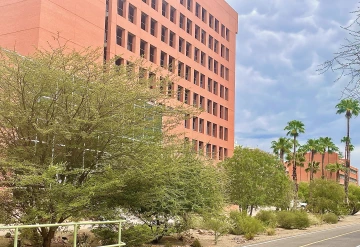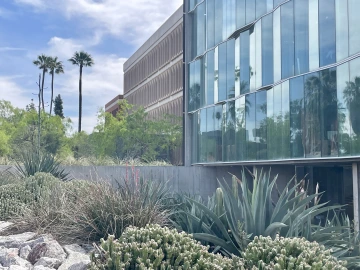Why Collections Biodiversity Matters

The health of an ecological system can often be judged by its biological diversity and balance. Biodiversity can be measured in terms of the number of species present and biological balance results from the subsequent dynamics occurring among the interconnected organisms in the larger ecological context. Both diversity and biological balance are necessary for ecosystems to function and maintain stability (1, 2). Scientific studies generally point to a loss of resilience (the ability to recover from stress) with decline in the number of species in an ecological system (3). As such, biological diversity among species within a population is not only necessary for that population’s resilience, but also for all the ecosystem services needed for environmental regulation and human security - think of the oxygen, air filtration, and climate regulation plants provide for the earth as well as the food, fiber, medicines and other commodities they provide for humans! Because they take in sunlight and create sugar, they are considered the primary producers of ecosystems and the foundation of food webs (4).
Since trees are among the largest and longest-lived species on earth, their role in supporting ecological resilience and human health is magnified (5). Consider, for example, their enhanced capacity to take up and lock away atmospheric carbon in their large woody bodies, or how they moderate climate in cities with the shade they cast! It is the size but also the health of trees that dictates the extent to which they can support planetary and human needs.
Unfortunately, both biological diversity and balance have decreased in the US as a result of changes in land use, land and water management, discharge of environmental pollutants, and through the introduction of invasive species (4). It is trees in cities, however, the urban forests of the world, which experience the greatest impacts of both human activity and environmental alteration. It is in cities that trees experience the greatest challenges but it is also in cities where healthy, diverse populations of trees have the greatest potential to counter both the human and environmental impacts of urbanization.
Living Collections Offer Conservation Solutions

Arboreta, living tree collections, and other public gardens provide tremendous opportunities for building and protecting biodiversity through ex situ conservation. By consciously collecting plants, public gardens serve as a sanctuary or a “library” of living specimens providing a reservoir of genetic diversity, stored safely away from any threats present in the species’ natural habitats.
The University of Arizona Campus Arboretum is located in the American southwest, in Tucson, Arizona, which is one of the fastest warming US cities. Within the roughly 400 acres of its main campus hundreds of tree and shrub species from arid climates on every continent on earth have been collected over the University's more than 125-year history (6). Here, the campus itself was used as an ideal proving ground and living laboratory for evaluating plant species tolerant to the heat, drought, high light, poor soils, and freezing temperatures experienced here. While this living collection is an historical part of the University's land grant commitment, the Campus Arboretum remains committed and understands the relevance of urban trees in the modern era of climate changes, population growth and urbanization. Since the establishment of the University of Arizona Campus Arboretum in 2002, the collection has grown and increased in diversity and purpose around our goals of preserving historic specimens, curating and enhancing this extensive collection in support of research, education and outreach programs focused on the value of trees in urban deserts. Central to these goals lies a need to enhance the plant diversity within the UA tree collection. Minimally, we aim to follow the 10-20-30 guideline for diversity –with no more than 10% of any one species, 20% of any one genus, or 30% of any family to preserve resilience. Here, diversity statistics are presented for the trees, shrubs, palms, arborescent succulents and herbaceous perennial plants included in the 2024 inventory.
Diversity Statistics (2024)

19,123 : Total Number of Accessions
90: Diversity of Botanical Families Represented in the Collection
304: Number of Botanical Genera Represented in the Collection
611: Number of Plant Species Represented in the Collection
807: Number of Plant Species Including Cultivars
For a more complete picture of the collection diversity, see the report linked below or access diversity working documents.
References
- Chapin III, F.S., B.H. Walker, R.J. Hobbs, D.U. Hooper, J.H. Lawton, O.E. Sala, and D. Tilman. 1997. Biotic control over the functioning of ecosystems. Science 277(5325):500-504.
- Wilson, E.O. 1992. The diversity of life. Cambridge, MA: Belknap Press.
- McCann, K.S. 2000. The diversity-stability debate. Nature 405(11):228-233.
- Diversity and Biological Balance EPA Report https://www.epa.gov/report-environment/diversity-and-biological-balance Retrieved Aug. 4, 2024.
- Gilhen-Baker, M., Roviello, V., Beresford-Kroeger, D. et al. Old growth forests and large old trees as critical organisms connecting ecosystems and human health. A review. Environ Chem Lett 20, 1529–1538 (2022). https://doi.org/10.1007/s10311-021-01372-y
- The University of Arizona Campus Arboretum Mission /mission

